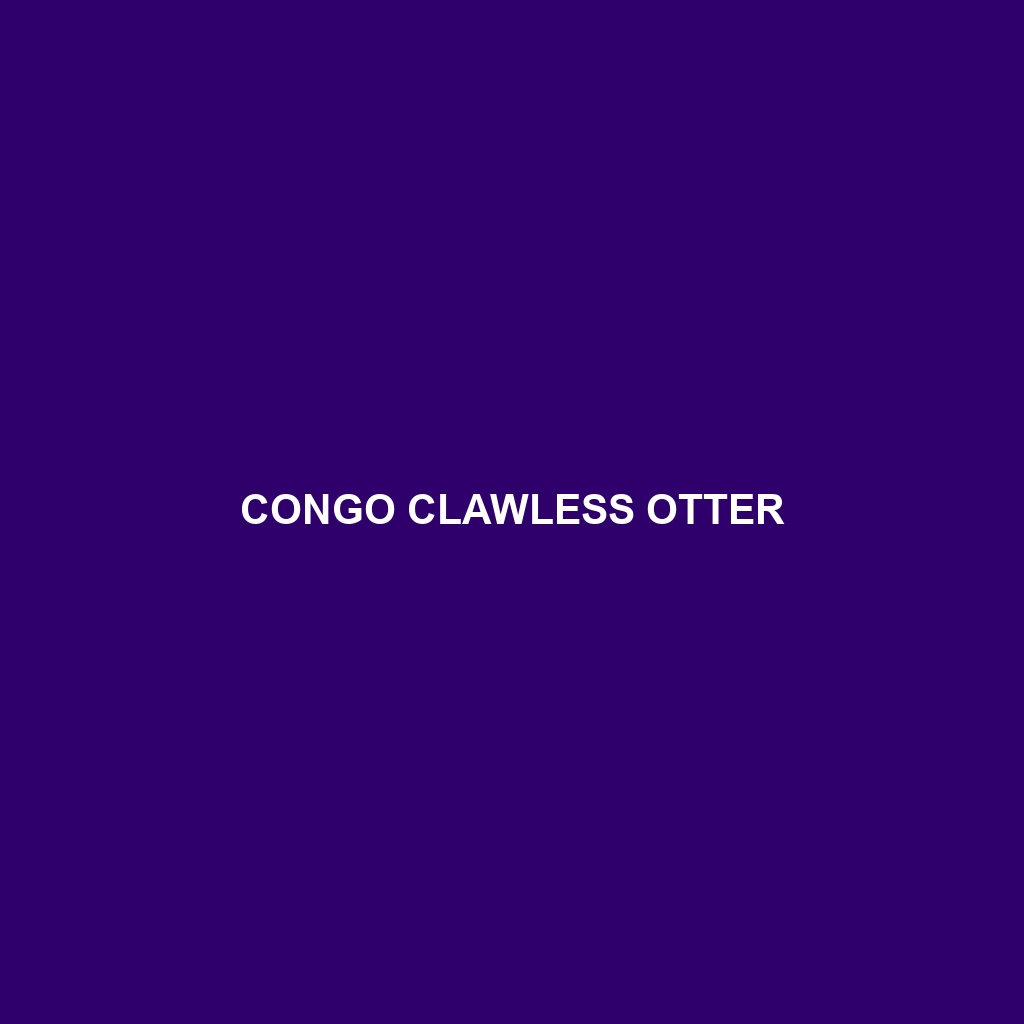Asian Small-clawed Otter ()
Common Name: Asian Small-clawed Otter
Scientific Name:
Habitat
The **Asian Small-clawed Otter** is primarily found in various regions across Southeast Asia, including countries such as India, Bangladesh, Myanmar, Thailand, and parts of Indonesia. They thrive in freshwater habitats, particularly in rivers, lakes, and marshes, where dense vegetation provides shelter and abundant food sources. Their preference for wetland ecosystems makes them an integral part of the **freshwater biome**.
Physical Characteristics
Asian Small-clawed Otters are among the smallest otter species, typically measuring between 60 to 95 cm (24 to 37 inches) in length, including their tails. Weighing approximately 2 to 5 kg (4.4 to 11 lbs), they have a streamlined body covered with thick, water-resistant fur that is generally dark brown to gray with lighter underbellies. Their most distinctive feature is their small size claws, which are less developed than those of larger otter species, allowing them to forage efficiently in muddy riverbeds.
Behavior
These otters are social animals, often found in family groups of up to 20 individuals. They exhibit playful behavior, frequently engaging in social interactions such as wrestling and sliding down mudbanks. Active both during the day and night, Asian Small-clawed Otters are known for their agility in water, where they display remarkable swimming skills. They are also often seen using tools, such as rocks, to crack open shellfish, showcasing their intelligence.
Diet
The diet of the Asian Small-clawed Otter primarily consists of small aquatic animals, including crabs, mollusks, and fish. Their **feeding habits** are particularly interesting as they prefer to hunt and forage in shallow waters, using their sensitive whiskers to detect prey. With their dexterous paws, they can easily manipulate objects, making them highly effective foragers in their **freshwater environments**.
Reproduction
Asian Small-clawed Otters are known to breed throughout the year, although more frequent mating occurs during the rainy season. After a gestation period of about 60 to 70 days, females typically give birth to a litter of 2 to 6 pups. The pups are born blind and rely heavily on their mothers for the initial stages of their development, gradually learning to swim and hunt alongside the family group.
Conservation Status
The current conservation status of the Asian Small-clawed Otter is **vulnerable** according to the IUCN Red List. Their populations are threatened by habitat destruction, pollution, and hunting. Conservation efforts are essential to protect their habitats and ensure long-term survival in the wild.
Interesting Facts
Did you know that the Asian Small-clawed Otter holds the title for the smallest otter species in the world? Additionally, these otters are often referred to as “Aonyx cinereus,” which highlights their distinct traits compared to larger otter species. Their playful antics and complex social structures also make them popular attractions in zoos and wildlife parks.
Role in Ecosystem
Asian Small-clawed Otters play a crucial role in their ecosystem as both predators and prey. As **top predators** in their aquatic habitats, they help maintain the balance of fish and invertebrate populations. Furthermore, their foraging activities contribute to the health of wetland ecosystems by aerating sediment and promoting biodiversity among aquatic life forms.
